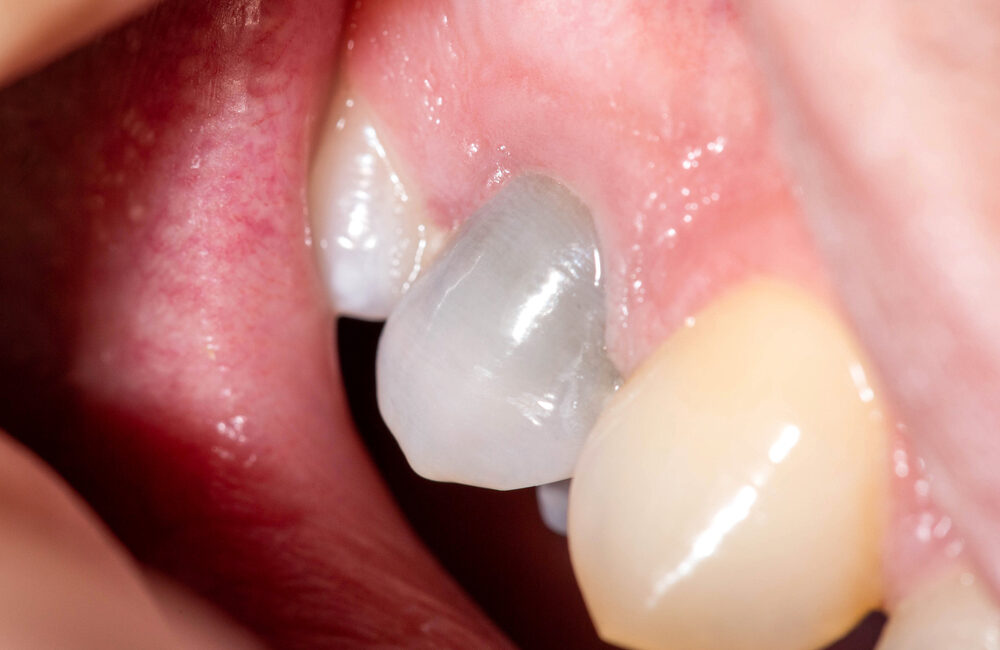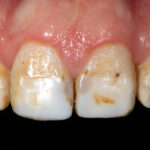
You may not think of your teeth as living things, but healthy teeth are as alive as your other body parts. So what happens when a tooth dies? Follow along to learn what a dead tooth is, as well as its causes, symptoms, and treatments.
What is a Dead Tooth?
Teeth have three layers — enamel, dentin, and pulp. The pulp is the inner layer made up of nerves, blood vessels, and connective tissue that keeps your teeth alive. The enamel on the outer part of your teeth serves a hard shell that helps protect the nerves from damage.
A dead tooth — also known as a non-vital tooth — is a tooth that no longer receives blood flow due to dying or dead nerves in the pulp. A tooth can die quickly in a matter of days or slower over many months or years. Once a tooth dies, it could fall out by itself. The tooth could also become infected, affecting your jaw and other teeth.
What Causes a Tooth to Die?
Tooth trauma and tooth decay are the most common causes of a dead tooth.
Tooth Trauma
Severe trauma or injury to your tooth is one way it can die. For example, getting hit in the mouth with a football or falling and landing hard on your face can cause the blood vessels in the pulp to burst, resulting in a loss of blood supply. Since no blood flows to the tooth, the living tissue inside the pulp will eventually die.
Tooth Decay
Your tooth can also die due to poor dental hygiene and a diet high in sugar. Both of these things may cause cavities that penetrate into your tooth’s deep layer. If left untreated, they can eat away at the enamel and reach the pulp. This creates an entryway for bacteria to go inside the tooth and infect it. The infection can cut off the blood supply to the pulp, causing it to die.
How to Identify the Symptoms of a Dead Tooth
The following symptoms may indicate that you have a dead or dying tooth that needs immediate attention from a dental professional:
Tooth discoloration
A healthy tooth’s color can range from bright white to shades of yellow. However, a dead or dying tooth will usually have discoloration that’s significantly different from the rest of your teeth, such as hues of brown, black, or even grayish blue. The color might continue to darken until the pulp completely dies.
Pain

An early infection in the pulp typically causes pain. You might feel it when you bite down on food or eat hot or cold food. Once the infection leads to the tooth dying, the pain can become persistent. If the pain goes away, don’t think the problem is solved. This could mean that the nerve has finally died.
Infection symptoms
With a dying tooth, you may experience symptoms related to a dental infection such as a fever, swelling along the gumline, and a foul taste in your mouth due to the infected pus draining out.
you may also interested in / Soft Teeth: The Facts You Need to Know
Treating a Dead Tooth
If left untreated, the infection can spread to other parts of your gums and lead to additional tooth loss. If you have a dying tooth, an endodontist may be able to save it by performing a root canal and clearing out the infected or dying pulp. An extraction may also be an option. Your dentist can follow up with an implant or dentures to help restore your tooth.
The best way to spot a dying or dead tooth is to schedule routine dental exams. It’s identifiable on an X-ray, and your dentist can detect symptoms such as an abscess during the early stages of development.














Pingback: What is Cosmetic Dentistry? - UDENZ - MENA DENTAL PLATFORM
Pingback: Can Teeth Be Whitened After a Root Canal? - UDENZ - MENA DENTAL PLATFORM